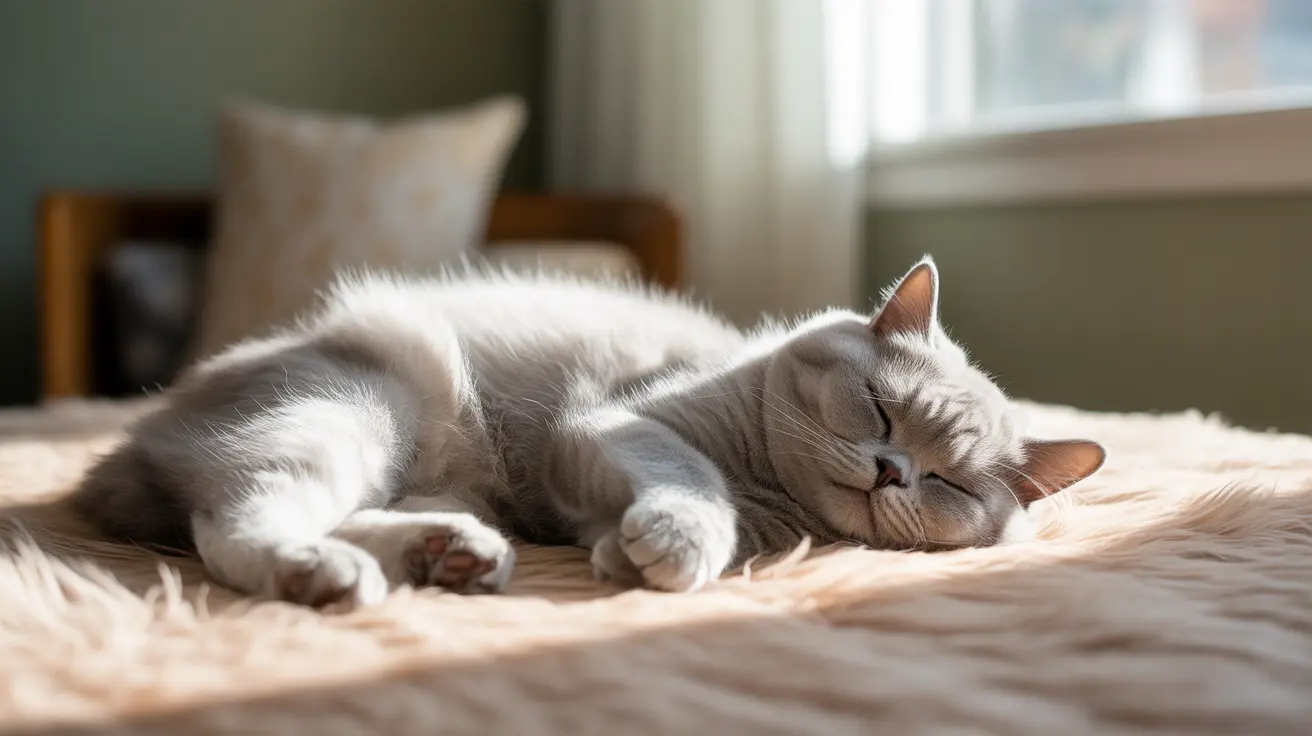Have you ever wondered why your cat sleeps face down, with their nose tucked away and face buried in their paws or bedding? This endearing sleeping position is not only adorable but also reveals fascinating insights into feline behavior, comfort, and instincts.
In this comprehensive guide, we'll explore the various reasons behind this unique sleeping posture and what it tells us about our feline friends' well-being and emotional state.
The Science Behind Face-Down Cat Sleeping
When cats sleep face down, they're actually engaging in a behavior that serves multiple biological and psychological purposes. This position allows them to maintain body heat, protect vulnerable areas, and achieve optimal comfort thanks to their incredibly flexible spines and muscular structure.
Physical Benefits of Face-Down Sleeping
Temperature Regulation
Cats lose significant body heat through their nose and ears. By sleeping face down, they naturally conserve warmth by minimizing exposure of these sensitive areas to cooler air. This position becomes particularly important during colder seasons or in air-conditioned environments.
Protection and Security
Despite being domesticated, cats retain their wild instincts. Sleeping face down protects their most vulnerable features - eyes, nose, and throat - from potential threats. This defensive positioning allows them to rest while maintaining a sense of security.
Psychological Aspects of Face-Down Sleeping
Stress Relief
The face-down position can serve as a self-soothing mechanism for cats. By blocking out visual stimuli and creating a darker environment, cats can better relax and achieve deeper sleep, especially in busy households.
Territory Marking
When cats press their faces into surfaces while sleeping, they're actually engaging in subtle scent marking through glands on their faces. This behavior helps create a familiar, comfortable environment that smells like them.
When to Monitor This Behavior
While sleeping face down is typically normal, certain circumstances warrant attention. Watch for:
- Sudden changes in sleeping position preferences
- Excessive sleeping or lethargy
- Difficulty breathing or unusual sounds
- Signs of discomfort when moving
- Changes in eating or drinking habits
Creating the Perfect Sleep Environment
To support your cat's natural sleeping preferences, consider:
- Providing multiple soft, cozy sleeping spots
- Maintaining consistent room temperatures
- Creating quiet, dim areas for undisturbed rest
- Offering elevated sleeping locations for security
Frequently Asked Questions
Why does my cat prefer sleeping face down with its nose tucked in?
Cats sleep face down to conserve body heat, feel secure, and block out environmental stimuli. This position allows them to protect their vulnerable facial areas while maintaining comfortable body temperature.
Is it normal for cats to sleep face down, and what does it indicate about their comfort?
Yes, it's completely normal and usually indicates that your cat feels safe and comfortable in their environment. This position is a sign of relaxation and contentment.
Can sleeping face down help my cat conserve warmth or block out noise and light?
Yes, this position effectively helps cats maintain body heat and creates a natural barrier against light and noise, promoting better quality sleep.
When should I be concerned if my cat sleeps face down—could it signal health issues?
While face-down sleeping is typically normal, be concerned if you notice additional symptoms like respiratory difficulties, lethargy, or significant behavioral changes. Consult a veterinarian if these occur.
How can I create a cozy environment to encourage safe and comfortable face-down sleeping?
Provide warm, soft bedding in quiet areas, maintain comfortable room temperatures, and offer multiple sleeping spots at different heights. Ensure your cat has both open and enclosed spaces to choose from.
Understanding your cat's sleeping positions and preferences helps you better care for their needs and ensure their comfort. While face-down sleeping might look unusual to us, it's a natural and healthy behavior that showcases your cat's instincts and comfort level in their environment.






